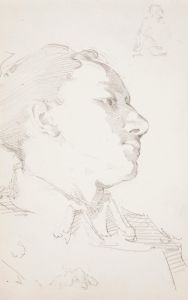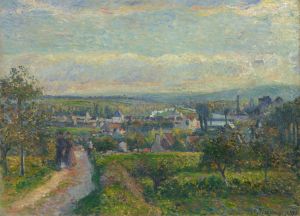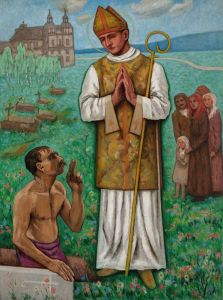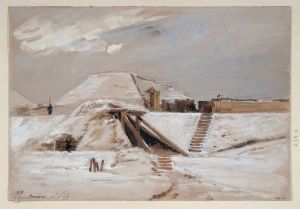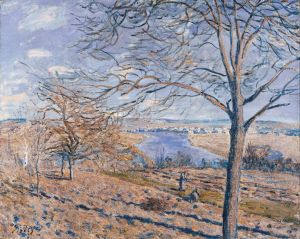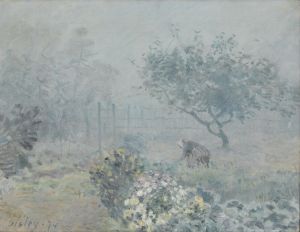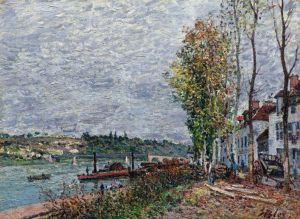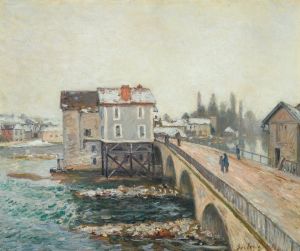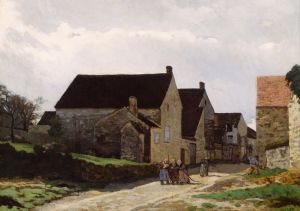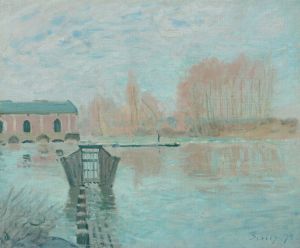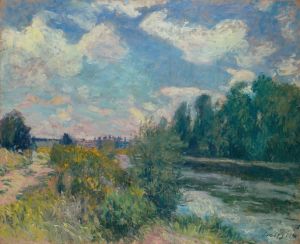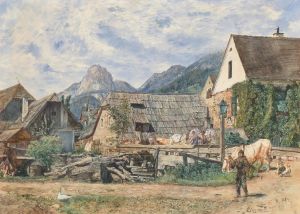
Effet De Neige À Louveciennes
A hand-painted replica of Alfred Sisley’s masterpiece Effet De Neige À Louveciennes, meticulously crafted by professional artists to capture the true essence of the original. Each piece is created with museum-quality canvas and rare mineral pigments, carefully painted by experienced artists with delicate brushstrokes and rich, layered colors to perfectly recreate the texture of the original artwork. Unlike machine-printed reproductions, this hand-painted version brings the painting to life, infused with the artist’s emotions and skill in every stroke. Whether for personal collection or home decoration, it instantly elevates the artistic atmosphere of any space.
Effet de Neige à Louveciennes (Snow Effect at Louveciennes) is an oil painting created by the French Impressionist painter Alfred Sisley in 1874. Sisley, known for his dedication to landscape painting, was a prominent figure in the Impressionist movement, and this work exemplifies his mastery of capturing the transient effects of light and atmosphere.
The painting depicts a snow-covered landscape in Louveciennes, a small village near Paris where Sisley lived for a period. Louveciennes was a favored location for many Impressionist painters, including Sisley, due to its picturesque scenery and proximity to the Seine River. In this work, Sisley portrays the quiet beauty of a winter day, with the snow blanketing the ground and trees, creating a serene and harmonious composition.
Sisley's use of light and color in Effet de Neige à Louveciennes is characteristic of the Impressionist style. He employs a subtle palette dominated by whites, grays, and soft blues to convey the cold, crisp atmosphere of the scene. The brushwork is loose and fluid, capturing the texture of the snow and the interplay of light and shadow. The painting reflects Sisley's keen observation of nature and his ability to evoke a sense of tranquility and stillness.
This painting was created during a pivotal time for the Impressionist movement. In 1874, the first Impressionist exhibition was held in Paris, marking a departure from the traditional academic art of the time. Sisley, along with artists such as Claude Monet, Pierre-Auguste Renoir, and Camille Pissarro, sought to depict modern life and the natural world with an emphasis on light, color, and atmosphere. While Sisley did not achieve the same level of fame as some of his contemporaries during his lifetime, his works have since been recognized for their significant contributions to the movement.
Today, Effet de Neige à Louveciennes is considered one of Sisley's notable works and is admired for its delicate rendering of a winter landscape. The painting is held in the collection of the Musée d'Orsay in Paris, which houses many masterpieces of 19th-century art. It continues to be celebrated as an example of Sisley's skill in capturing the ephemeral beauty of nature through the Impressionist lens.






